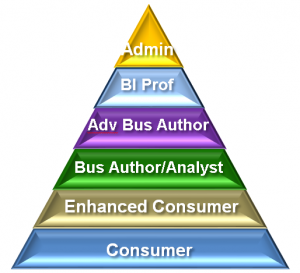Rapidly Adaptive Visualization Engine (RAVE) is the technology behind IBM’s extensible visualization offering. With the ability to create your own visualizations and to utilize those that others have created, the bounds of what have historically been accepted as the limits of IBM Cognos charts and graphs are gone. Read more
Tag Archive for: Active Report
Part 1 of Building Effective IBM Cognos Active Reports, described Active Report variables, connections, and how they work together to make dynamic content possible in Cognos 10 Active Reports. Part 2 began a discussion of static controls and how to make larger changes to an Active Report display. This article, Part 3, continues that discussion with navigating back from detail pages, animation, and more on combining static and data controls. (If you haven’t read Part 2 yet, please do – the example drill through report started in that article is used in this one as well.) Read more
One of the primary benefits to an organization that’s invested in IBM Cognos (or any business intelligence platform for that matter) is empowering its people to use the tools to interact with their company’s data to make smart, informed, and proactive decisions that positively impact the direction of the business. But unless a user feels confident working with the tools and the information returned, the success of the business intelligence investment will not be fully maximized. Proper training on the tools is imperative to instilling that sense of confidence and empowerment; the Ironside Group wants to be your training partner. Read more
Active Reports are a new type of report in IBM Cognos 10 that combine data and layout into a single file. This file can be distributed and viewed offline, allowing reports to be reviewed “on the go”. Active Reports also contain a great deal of animation and display functionality, making them ideal for dashboards and other high-level reports where style and graphical sophistication are important.
The basic components of an Active Report are the same as any other Report Studio report – lists, crosstabs, charts, etc. However, the way these components communicate and interact with each other is completely new. Designing an Active Report requires an understanding of these interactions, and of how Active Reports are generated by the Cognos report service.
Active Report Variables
Active Report elements communicate using Active Report Variables. While there are many types of functionality that can be created, all active report interaction features are based on two types of communication:
–Set a variable when the user interacts with a control (select a drop down, click on a chart element, etc.)
–React to a variable being set (select a card, filter a list, enable a button)
W hen talking to new or existing IBM Cognos customers, there often seems to be confusion around Cognos licensing. The new functionality in C10 adds to this complexity. In hope of shedding some light on this topic, this article will discuss the impact of C10 and the different roles. In a follow-up article next month we will cover “Authorized User” versus “PVU”.
hen talking to new or existing IBM Cognos customers, there often seems to be confusion around Cognos licensing. The new functionality in C10 adds to this complexity. In hope of shedding some light on this topic, this article will discuss the impact of C10 and the different roles. In a follow-up article next month we will cover “Authorized User” versus “PVU”.
What changes for C10?
There is technically no license cost for migrating from C8 to C10. However, in order to take advantage of much of the new user interfaces and visualizations available in C10 (e.g. Business Insight, Active Report), you may need to trade up to a higher user role. While many of the existing roles will carry forward in C10, there seems to be a conscious effort by IBM to consolidate and simplify the roles in C10. We will discuss the two most common roles: Enhanced Consumer and Advanced Business Author. We’ll also look at how an organization can protect their current investment in other roles. Read more


